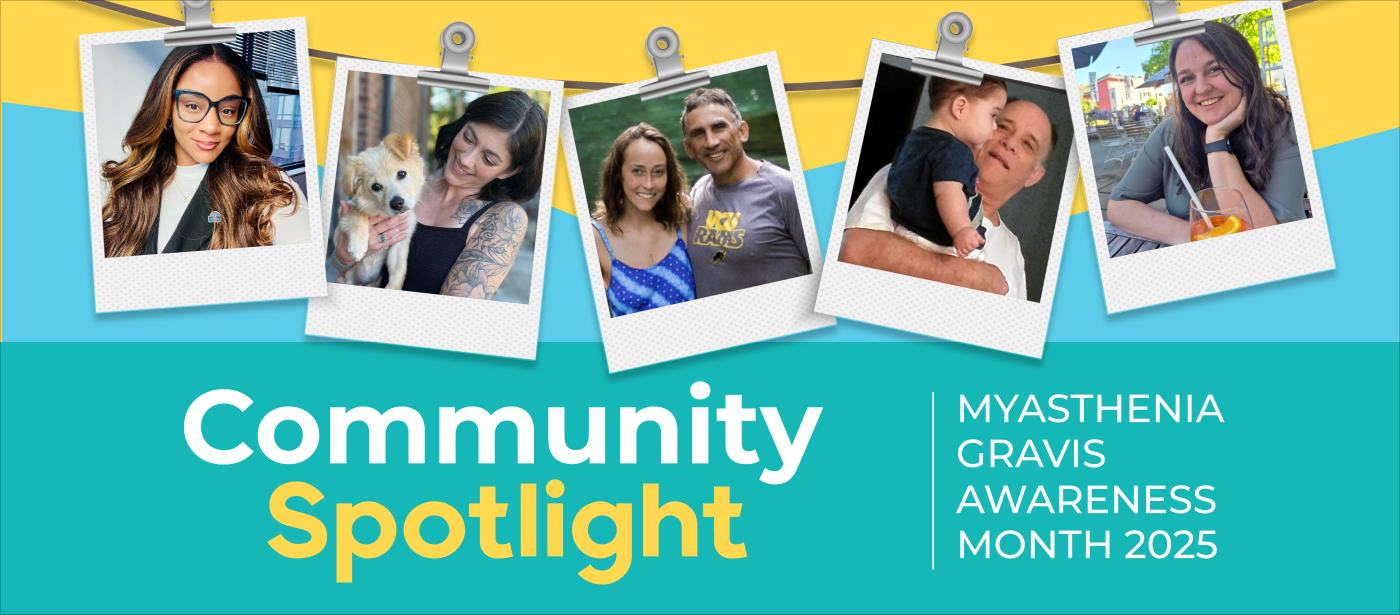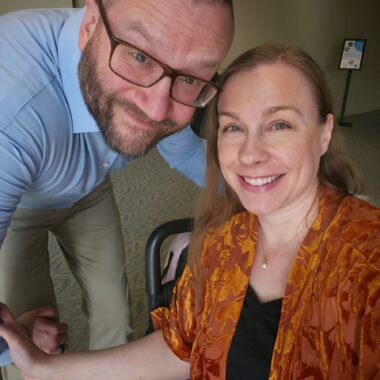How I use my voice to advocate for the myasthenia gravis community


Stefanie Shea and her husband, Dave Akers, attend a recent concert. Shea is in her power wheelchair, which enables her to leave the house and participate. (Courtesy of Stefanie Shea)
This is Stefanie Shea’s story:
I’m a musician, artist, advocate, and nerd who has lived with myasthenia gravis (MG) for at least a decade. In that time, my husband and I have been through it all with my disease. I have a severe, refractory form of MG, so I’ve experienced every up and down it offers.
I have been doing patient advocacy online for more than a decade for MG, postural orthostatic tachycardia syndrome (my other condition), and other chronic and rare illnesses. Rare disease patients often end up becoming advocates because we spend so much energy educating medical and nonmedical professionals about our conditions. It can also be a cathartic way of coping with something so few know anything about.
I try to raise awareness about the challenges of getting a diagnosis and treatment, especially since it takes an average of about six years for rare disease patients to get diagnosed.
For years, I was bedridden, unable to walk, and living in the hospital part time in a perpetual myasthenic crisis. I was maligned and ignored by doctors while searching for a diagnosis and told, even when my condition was life-threatening, that I was imagining my symptoms. I eventually persevered and found medical professionals who believed me. Sadly, many patients go through something similar.
Since I was diagnosed, multiple MG treatments have been approved, which is an enormous achievement. At the beginning of my disease journey, these targeted treatments didn’t exist. I have benefited from the new therapies as well as a thymectomy (surgery to remove my thymus gland), and my health is now more stable. My MG continues to be refractory, but I’m very grateful to be more stable than I was.
It takes a village to survive with a rare disease, and I have a great neuromuscular specialist and team of doctors in general, as well as support from family and friends.
My advocacy work gives me purpose. I can use my academic background (I’m a former English professor) to provide information and share my lived experience with MG. I believe patient voices matter in the conversations about chronic illness and rare disease.
MG Awareness Month is vital for lifting the voices of patients, shedding light on the disease, and promoting continued research. Advocacy creates community. I share my story to make the invisible visible and, hopefully, ensure other patients aren’t also dismissed by doctors and can get treatment to improve their quality of life.
In recognition of Myasthenia Gravis Awareness Month in June, the Myasthenia Gravis Community Spotlight campaign features a series of stories highlighting the real-life experiences of people affected by myasthenia gravis, written in their own words. Follow us on Facebook, Instagram, or X for more stories like this, using the hashtag #MGSpotlight, or read the full series here.






